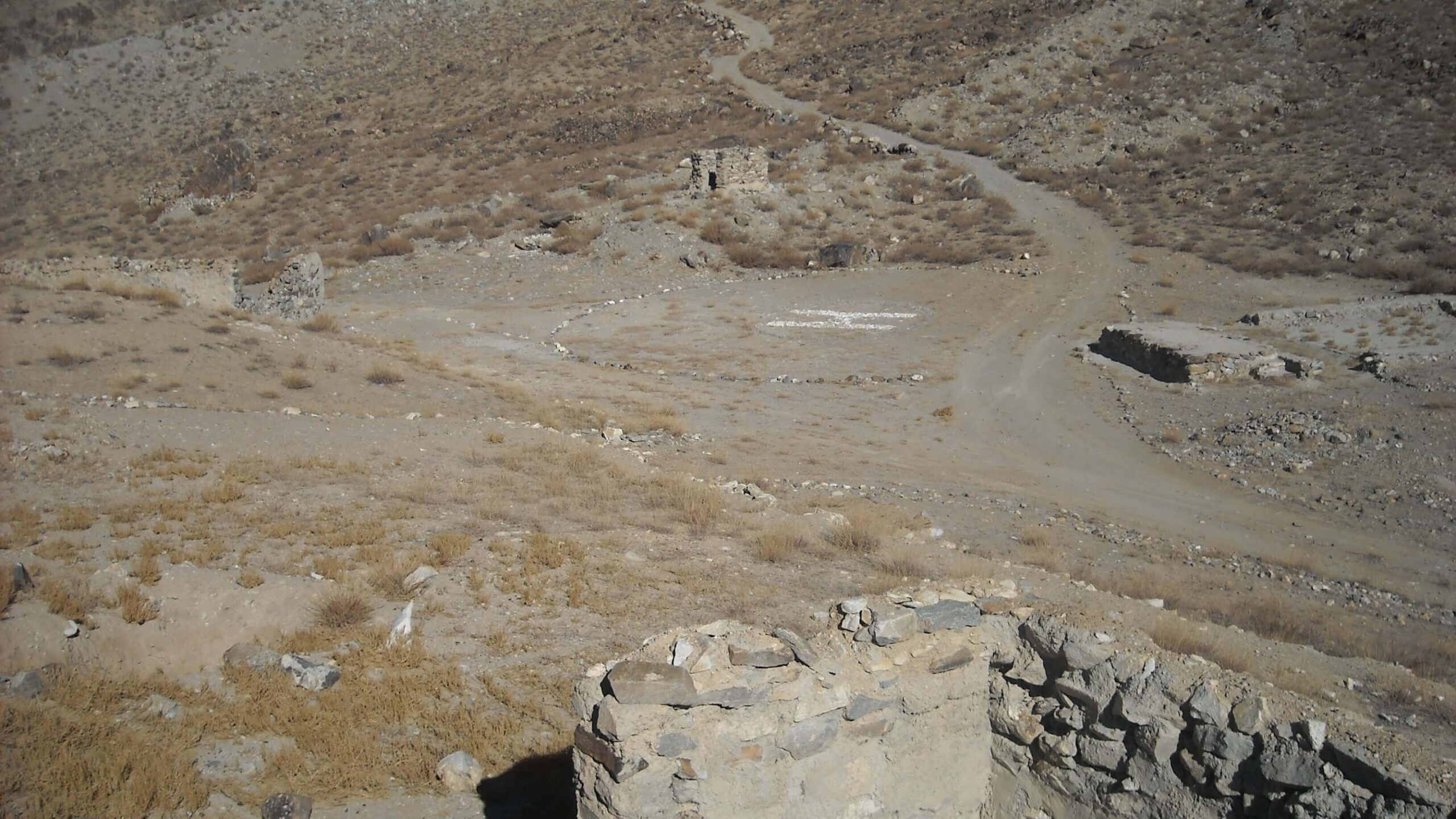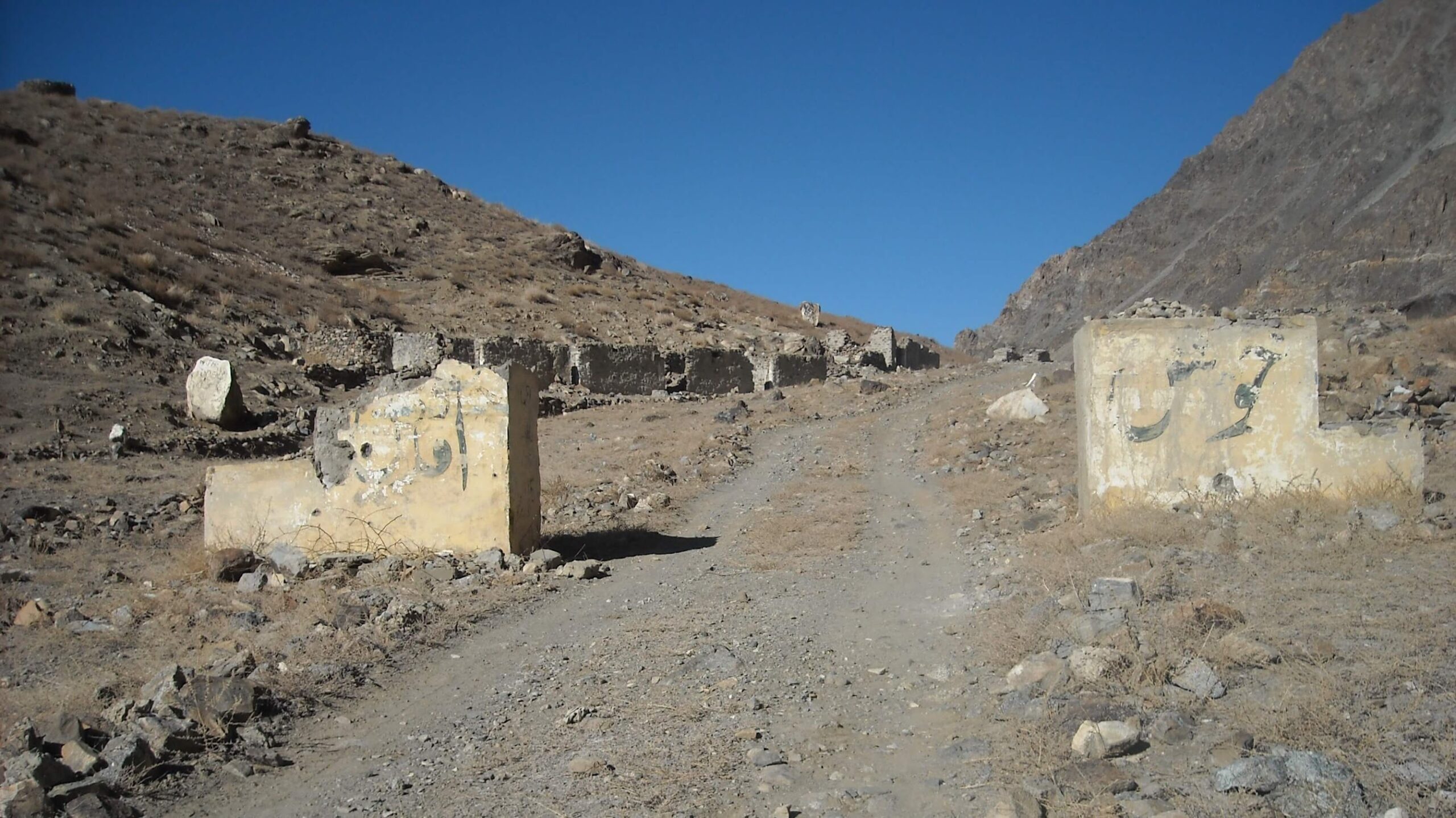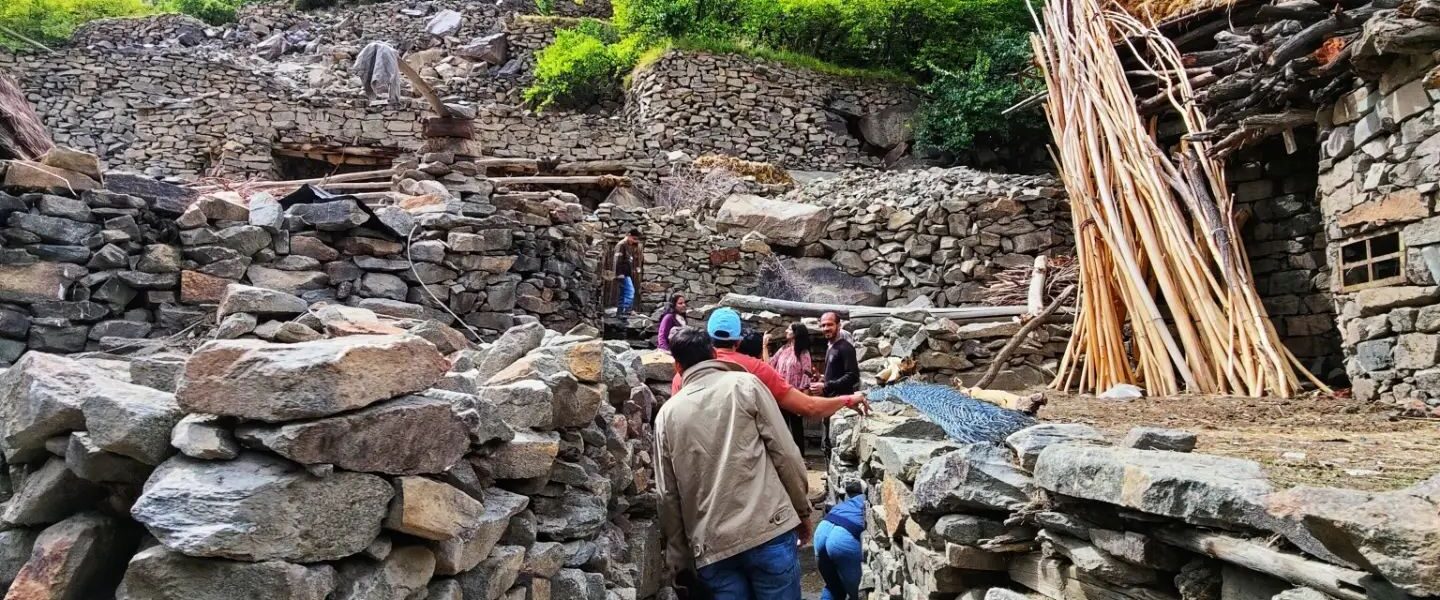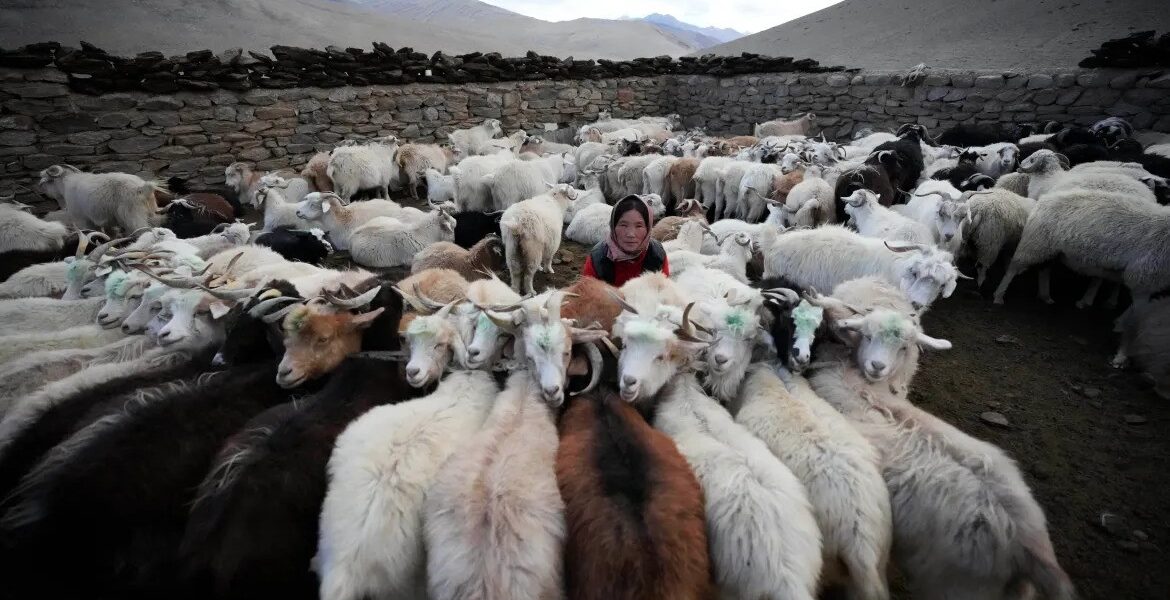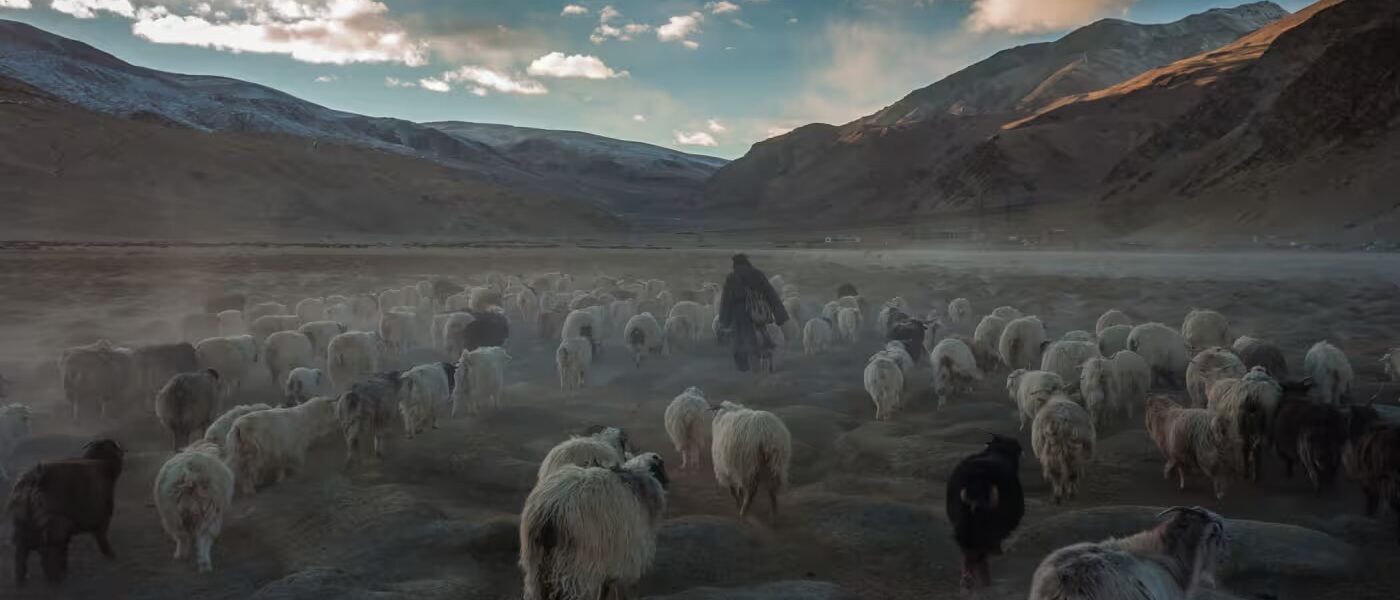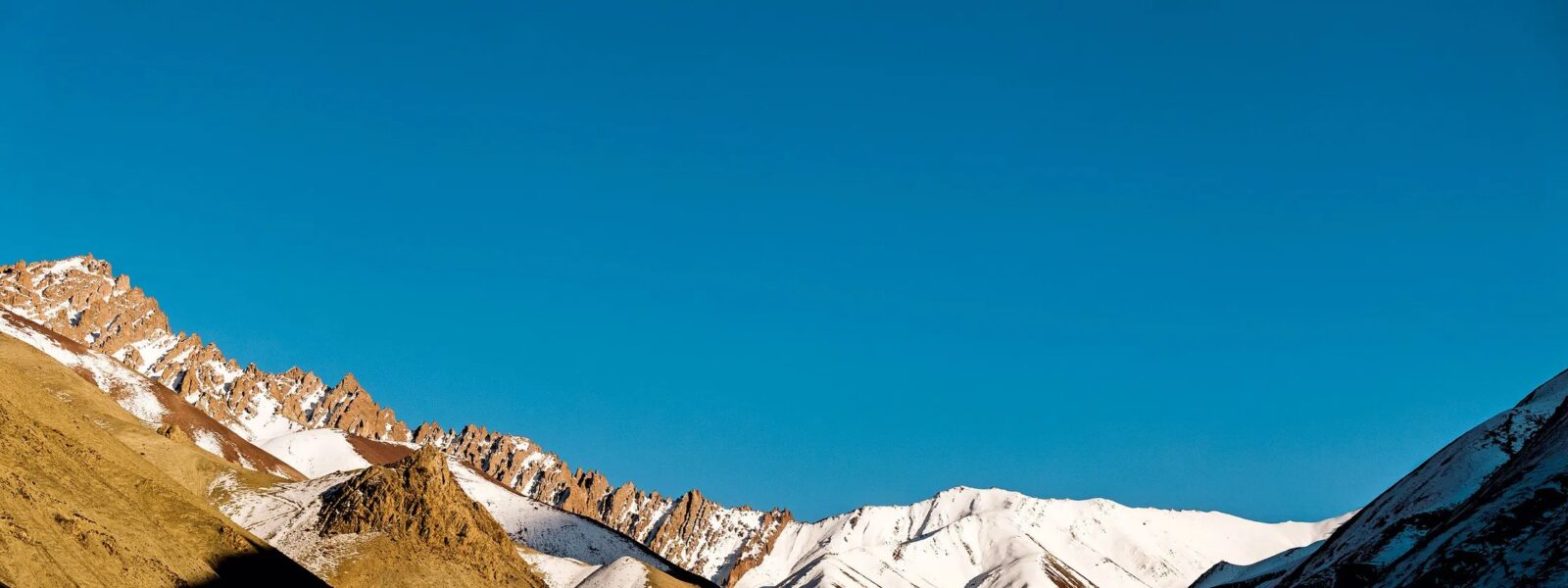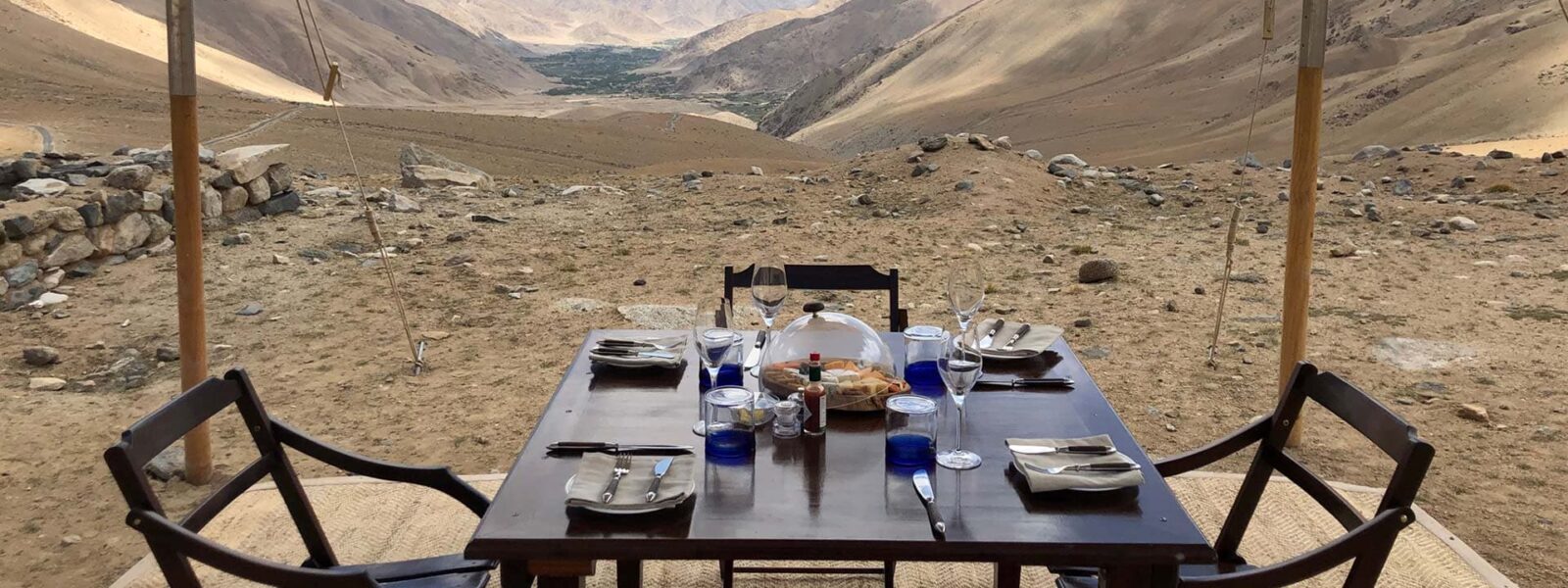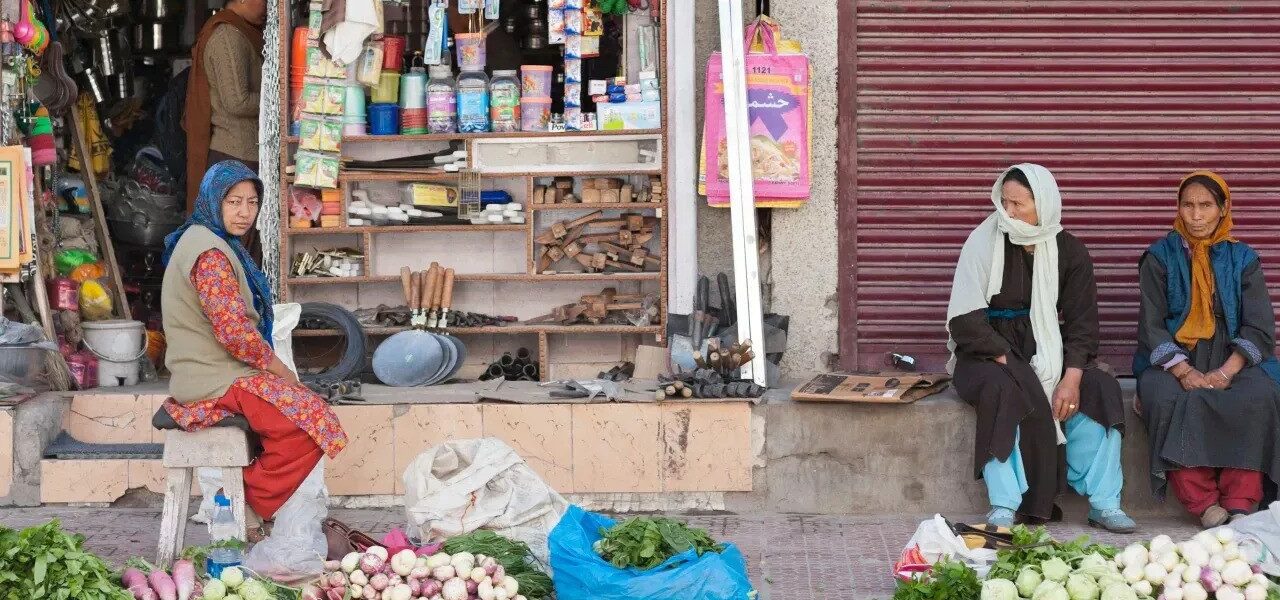Exploring Ladakh Hidden Bunkers reveals a fascinating aspect of Ladakh, a high-altitude region in the northernmost part of India, known for its stunning landscapes, tranquil monasteries, and adventurous trekking routes. However, few are aware of its hidden Cold War bunkers, relics of a tense geopolitical era that saw the construction of secret military infrastructure deep in the Himalayas. These bunkers, scattered across the rugged terrain, offer a unique glimpse into the region’s strategic importance during the Cold War.
In this article, we’ll explore these hidden bunkers, their significance during the Cold War, and how they contribute to Ladakh’s military heritage today.
Introduction to Ladakh’s Cold War Bunkers
Nestled in the harsh yet breathtaking terrain of Ladakh, remnants of a forgotten chapter of military history lie hidden: Cold War-era bunkers. Built during the height of the Cold War, when global tensions between the superpowers—primarily the United States and the Soviet Union—impacted even remote regions like Ladakh, these bunkers served as critical defense installations.
The Himalayan region, already a site of military importance due to its proximity to China, became a focal point during the Cold War era. These bunkers were part of a broader strategy to protect India’s northern borders, providing strategic defense against potential Soviet and Chinese threats.
The Strategic Importance of Ladakh During the Cold War
Ladakh’s Geopolitical Role in the Cold War
Ladakh’s location made it a crucial player in Cold War geopolitics. Sandwiched between China, Pakistan, and India, this region provided an essential vantage point in the event of military confrontations. The Cold War’s ripple effects in South Asia led to increased military presence in Ladakh, turning it into a critical front for Indian defense. Tensions with China, particularly along the Line of Actual Control (LAC), further amplified Ladakh’s importance as a strategic buffer.
| Country |
Distance from Ladakh (approx.) |
Cold War Role |
| China |
~ 0 km (Shared border) |
Tensions along LAC |
| Pakistan |
~ 200 km |
Indo-Pakistani disputes |
| Soviet Union |
~ 1500 km |
Global Cold War influence |
How the Cold War Shaped Ladakh’s Military Infrastructure
The Indo-China war of 1962 and subsequent Cold War tensions drove India to establish numerous military fortifications in Ladakh. Bunkers, observation posts, and other defense structures were created to monitor and defend against possible incursions. These defense systems formed a network of underground shelters where soldiers could survive harsh winters and be protected from potential nuclear or missile attacks.
Many of these bunkers remain concealed in remote parts of Ladakh, with some still serving a military purpose, while others have been abandoned but left largely intact.
Exploring the Hidden Bunkers in Ladakh
Locations of Cold War-Era Bunkers in Ladakh
Most Cold War bunkers in Ladakh are situated in high-altitude, difficult-to-access regions close to the India-China border. Areas like Siachen Glacier, Leh, and Khardung La are known to house these hidden military installations. While their exact locations remain classified, some sites near the Karakoram Pass and Changthang plateau are accessible for tourists on guided military tours.
Visitors often describe these locations as eerie, with tunnels and concrete structures still standing against the backdrop of snow-capped mountains. Hiking to these bunkers provides not only a glimpse into Cold War history but also a unique way to explore Ladakh’s rugged landscape.
What Lies Inside Ladakh’s Abandoned Cold War Bunkers?
Inside these bunkers, the walls tell stories of a bygone era. Some still contain rusted equipment, remnants of communication devices, and graffiti left by soldiers stationed there decades ago. The structures were built to withstand extreme weather conditions, providing warmth and security in one of the world’s harshest climates.
In several cases, these bunkers have been modified or repurposed by the Indian Army, while others have been left abandoned, quietly decaying in the freezing cold.

The Role of Ladakh’s Bunkers in the Indo-China Conflict
Tensions Between India and China in Ladakh During the Cold War
Ladakh’s Cold War bunkers were not just relics of global superpower tensions—they played a direct role in the Indo-China conflict. The 1962 war between India and China over border disputes had lasting effects on the region, leading to the construction of these bunkers as part of a defensive strategy.
Positioned along the Line of Actual Control (LAC), the bunkers offered Indian forces a way to monitor Chinese military activities and quickly respond to any escalation. Even today, tensions between India and China over the disputed borders keep these areas on high alert.
Cold War-Era Defense Strategies in the Himalayas
The bunkers were built with defense strategies in mind, focusing on tactical positioning, hidden access routes, and proximity to critical border points. Their placement on high ridges allowed Indian soldiers to oversee enemy movement from a vantage point, while underground shelters ensured they could remain stationed for long periods without being exposed.
These defense structures were also designed to withstand missile strikes, a growing threat during the Cold War when nuclear capabilities became a global concern.
The Forgotten Legacy of Ladakh’s Cold War Bunkers
Why These Military Structures Were Abandoned
As geopolitical conditions changed and Cold War tensions subsided, many of Ladakh’s bunkers were no longer essential for active defense. Improved satellite surveillance and advanced military technology meant that many of these structures became outdated. Additionally, the shift towards more mobile and agile military strategies rendered static bunkers less useful.
Preserving Ladakh’s Cold War Heritage
While many bunkers remain unused, there is growing interest in preserving them as part of Ladakh’s historical and cultural heritage. These structures offer a rare insight into a world shaped by Cold War fears, making them significant not only for military historians but also for tourists interested in Ladakh’s hidden past.
Cold War Relics in Ladakh: A Unique Experience for Tourists
How to Explore Ladakh’s Cold War Bunkers
For the adventurous, exploring Ladakh’s Cold War bunkers is a unique way to combine history with adventure. Some bunkers, particularly near Khardung La and Nubra Valley, are accessible through trekking routes. However, accessing these bunkers often requires special permits, as many are located in sensitive border areas.
- Obtain necessary permits from local authorities
- Hire a local guide familiar with the area
- Be prepared for extreme weather conditions
- Respect military property and follow any restricted area signs
What to Expect When Visiting Ladakh’s Hidden Bunkers
Visitors can expect a mix of history and stark isolation when they reach these bunkers. The structures are often in remote areas, far from populated villages, and offer little in terms of amenities. However, the sense of stepping into a place frozen in time, with breathtaking Himalayan views as the backdrop, makes the journey worthwhile.
The Significance of Ladakh’s Cold War Bunkers Today
Military Influence on Modern Ladakh
While many of these Cold War bunkers are no longer in active use, they left a lasting impact on Ladakh’s military culture. Today, Ladakh remains a heavily militarized zone, and the lessons learned from maintaining bunkers and defenses during the Cold War continue to shape modern military strategies in the region.
Lessons from the Cold War Era for Today’s Military Strategies
The bunkers of Ladakh represent more than just relics of the past—they offer valuable lessons in military preparedness, strategy, and adaptation. As border tensions between India and China occasionally flare up, these Cold War-era strategies are revisited, ensuring that Ladakh remains a vital defense outpost.
Conclusion: Revisiting Ladakh’s Cold War Past
Ladakh’s hidden Cold War bunkers offer a unique blend of history, adventure, and military significance. As remnants of a tense geopolitical period, these bunkers not only remind us of the Cold War’s impact on remote corners of the world but also highlight Ladakh’s continuing importance in regional defense. For tourists and historians alike, exploring these hidden structures in the heart of the Himalayas is an unforgettable journey.

Frequently Asked Questions (FAQs)
What are Cold War bunkers in Ladakh?
Cold War bunkers in Ladakh are military fortifications built during the Cold War, primarily to protect the region against possible threats from China and the Soviet Union.
Can tourists visit the hidden bunkers in Ladakh?
Some bunkers are accessible to tourists, but many require special permits due to their proximity to sensitive border areas.
Why were these bunkers built during the Cold War?
The bunkers were built to provide strategic defense during the Cold War, especially in response to rising tensions between India, China, and Pakistan.
Where are the Cold War bunkers located in Ladakh?
They are scattered across regions like Siachen Glacier, Khardung La, and Nubra Valley, often in remote and high-altitude locations.
Are there guided tours available to explore these bunkers?
Yes, guided tours are available for certain accessible bunkers, particularly in military-tourist collaboration zones.
What makes Ladakh’s Cold War bunkers unique?
These bunkers are unique because they are located in one of the world’s highest and most remote mountain ranges, offering both historical and strategic insights.
Exploring Ladakh Hidden Bunkers
Exploring Ladakh Hidden Bunkers | The journey through Ladakh mirrors the very essence of unraveling unknown horizons, as its dramatic landscapes and unique cultural identity awaken the deepest sense of wonder and exploration. Exploring Ladakh Hidden Bunkersdelves into this realm where inner peace intertwines with the wild, untouched beauty of Ladakh. From the snow-capped peaks to the serene monasteries, every step in Ladakh is a step toward self-discovery. The mountains, ancient paths, and unspoken mysteries stretch before travelers, offering a meditative experience where each encounter feels both effortless and transformative. Whether it’s trekking across remote valleys or sitting quietly beside a sacred lake, Ladakh invites those who seek a deeper connection to the natural and spiritual world.

The Exploring Ladakh Hidden Bunkers’s Exploring Ladakh Hidden Bunkers
The monasteries of Ladakh stand as living monuments to the region’s profound spiritual heritage. With origins dating back over a thousand years, these ancient structures are both places of worship and repositories of art, culture, and wisdom. Hemis Monastery, one of the largest in Ladakh, is renowned for its annual festival, featuring colorful mask dances performed by monks. The history of these monasteries reflects Ladakh’s role as a crossroads between India, Tibet, and Central Asia, where religious and cultural influences have intertwined over the centuries.
The Tibetan Buddhist influence is especially evident in the architecture and daily life of the monks. Prayer wheels, intricate murals, and the soft hum of chants fill the air as visitors explore the monastery grounds. Each monastery, from the remote Lamayuru to the awe-inspiring Thiksey, offers a window into the spiritual heart of Ladakh. These centers of meditation, learning, and community life continue to thrive, preserving traditions that have shaped Ladakh for generations.
Why Visit Ladakh for Exploring Ladakh Hidden Bunkers?
Ladakh is a destination that transcends mere travel. It offers a journey that touches both the outer and inner landscapes, making it a perfect setting for those who seek to unravel their own unknown horizons. The region’s breathtaking scenery—from towering mountain ranges to hidden valleys—provides not just an escape but a space for contemplation and growth. Ladakh’s culture, deeply rooted in Buddhist practices, invites visitors to reflect on their own lives and the world around them.
Ladakh’s people, known for their warmth and hospitality, add to the richness of the experience. Villages like Sumda Chun and the legendary Nubra Valley introduce travelers to a way of life that is intricately connected to nature and spirituality. Staying in local homestays allows for immersive experiences where one can learn about traditional Ladakhi customs, share meals made from local produce, and participate in community rituals.

Beyond its natural beauty, Ladakh offers a unique opportunity to explore oneself. The vastness of the region’s plateaus and the clarity of its skies seem to mirror the vastness of the human spirit. Whether it’s standing atop a mountain pass at 18,000 feet or meditating in a centuries-old monastery, Ladakh helps unravel the unknown horizons within each traveler.
Finding the Best Exploring Ladakh Hidden Bunkers in Ladakh
Finding the best places in Ladakh to experience “Exploring Ladakh Hidden Bunkers” involves venturing off the beaten path. Ladakh’s lesser-known treks, such as those leading to secluded monasteries or high-altitude lakes, offer unparalleled opportunities for solitude and reflection. The Markha Valley trek, for instance, takes travelers through verdant valleys, ancient villages, and high-altitude passes, allowing for both physical and spiritual exploration.
Ladakh’s iconic lakes, including Pangong Tso and Tso Moriri, are ideal spots for quiet contemplation. Their still waters reflect the sky, creating a mesmerizing landscape that feels timeless and infinite. Sitting beside these lakes, especially at dawn or dusk, brings an overwhelming sense of peace and connection with nature.

For those interested in Ladakh’s spiritual heritage, exploring monasteries such as Alchi, Phyang, or Diskit can be a transformative experience. These sites are not just places of worship but also centers of art, philosophy, and wisdom. Visiting these monasteries, with their ancient murals and intricate statues, offers insight into Ladakh’s rich cultural tapestry.
Ladakh’s Atmosphere and Exploring Ladakh Hidden Bunkers
Ladakh’s atmosphere is unlike any other place on Earth. The stark contrasts between the rugged mountains and the serene, tranquil monasteries create an environment that feels both raw and sacred. The traditional decor in Ladakhi homes and religious sites reflects this balance, with mud-brick houses adorned with prayer flags and colorful thangkas (Buddhist paintings) that add warmth and spiritual meaning to the space.

The interiors of Ladakhi homes, often simple and functional, are filled with symbols of devotion. Small shrines dedicated to Buddhist deities are common, and the air is often fragrant with incense. The use of earthy materials, like stone and wood, along with brightly colored textiles, creates an inviting and peaceful space, perfect for relaxation and reflection.
Traditional Ladakhi Cuisine
Traditional Ladakhi cuisine is an integral part of the region’s identity, offering a unique blend of flavors that reflect its harsh climate and remote location. Hearty, warming dishes such as thukpa (noodle soup) and momos (dumplings) provide the sustenance needed to endure Ladakh’s cold temperatures. Skyu, a thick stew made with root vegetables and barley, is another staple of the Ladakhi diet, designed to nourish both body and spirit.

Drinks like butter tea, made with yak butter and salt, are a must-try for anyone visiting Ladakh. This rich, savory drink is not only warming but also hydrating, making it essential for those venturing into the high-altitude regions of Ladakh. Chang, a local barley beer, is often enjoyed during festivals and community gatherings, adding a sense of joy and camaraderie to any occasion.
Live Cultural Exploring Ladakh Hidden Bunkers in Ladakh
Ladakh is home to a vibrant cultural scene, with festivals and live performances held throughout the year. The Hemis Festival, which celebrates the birth of Guru Padmasambhava, is one of the largest and most famous events in the region. Monks dressed in elaborate costumes perform cham dances, which depict the triumph of good over evil. The energy of the festival, with its bright colors, rhythmic music, and elaborate rituals, draws visitors from around the world.
Other local festivals, such as the Losar (New Year) and Ladakh Festival, provide visitors with the chance to witness traditional dance, music, and crafts that have been passed down through generations. These events are more than just entertainment; they are a celebration of Ladakh’s rich cultural heritage and its deep connection to the spiritual world.
Trekking and Outdoor Activities Exploring Ladakh Hidden Bunkers
Ladakh is a trekker’s paradise, offering some of the most stunning and challenging routes in the world. From the famous Exploring Ladakh Hidden Bunkers, which follows the frozen Zanskar River, to lesser-known routes like the Sham Valley or Nubra Valley treks, Ladakh’s landscape offers endless possibilities for adventure and discovery. The high-altitude passes, such as Khardung La and Chang La, offer breathtaking views of snow-capped peaks and sprawling valleys.

Wildlife enthusiasts will also find Exploring Ladakh Hidden Bunkers to be a haven for rare species such as the snow leopard, Himalayan blue sheep, and the Tibetan wild ass. Winter expeditions to spot the elusive snow leopard in the Hemis National Park are gaining popularity among wildlife photographers and conservationists alike.
The Importance of Preserving Ladakh’s Exploring Ladakh Hidden Bunkers
Ladakh’s rich cultural and environmental Exploring Ladakh Hidden Bunkers is under increasing threat from climate change and mass tourism. Preserving this unique region requires careful attention to sustainable tourism practices. Choosing eco-friendly accommodations, supporting local businesses, and participating in community-led conservation efforts are just a few ways that visitors can contribute to the preservation of Ladakh’s natural and cultural heritage.
Ladakh’s people have a long history of living in harmony with their environment, practicing sustainable agriculture, and maintaining a deep spiritual connection to the land. Visitors are encouraged to follow the same principles, leaving no trace and respecting the fragile ecosystems that make Ladakh so special.
Etiquette and Tips for Visiting Exploring Ladakh Hidden Bunkers
Before visiting Ladakh, it’s essential to understand and respect the region’s customs and traditions. As a deeply spiritual place, Ladakh requires visitors to dress modestly, especially when visiting monasteries or attending religious ceremonies. Always ask for permission before taking photographs inside monasteries or of local people.
Medical Exploring Ladakh Hidden Bunkers
Spa trail Exploring Ladakh Hidden Bunkers
Exploring Ladakh Hidden Bunkers

When Exploring Ladakh Hidden Bunkers, remember to stay on designated paths to avoid damaging fragile ecosystems. Tipping is appreciated but not expected in most settings, and it’s important to carry cash, as many remote areas do not accept credit cards. Lastly, be mindful of altitude sickness and take the necessary precautions when traveling to higher elevations.
Conclusion: Enjoying Exploring Ladakh Hidden Bunkers in Ladakh
Ladakh is a place where the physical and spiritual worlds converge, offering travelers a journey unlike any other. Whether you’re trekking across high-altitude deserts, exploring ancient monasteries, or simply sitting in quiet reflection by a mountain lake, Ladakh invites you to unravel your own unknown horizons. By respecting the region’s traditions and practicing sustainable tourism, you help ensure that Ladakh’s beauty and cultural richness will be preserved for future generations to explore and enjoy.
